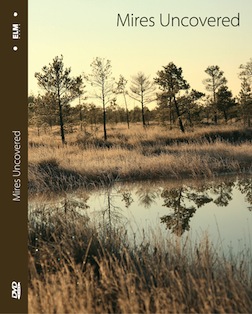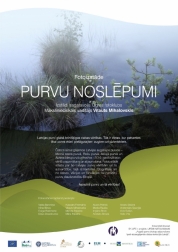What are raised bogs
Mires
Mire is a constantly or periodically wet area with active formation of peat, and it maintains specific plant and animal species communities. Mires may develop both as a result of paludification of mineral soil or by filling-in of open water bodies. This process passes on time of few hundreds to many thousand years according to eutrophication and depth of water body and other factors.
In Latvia, three types of mires are present – fens, transition mires and bogs. They take 4.9 % from area of Latvia. Peatlands in Latvia take 10.4 %, and include commercial mires, swampy forest types, dried mires and peat extraction sites. Today, almost half of mires are influenced by human activities. For now, about 20 % from all peat extraction sites are in use, and establishing of new peat fields has not been planned.
Mires in Latvia
One can find many mire types in Latvia. According to water and mineral substance reception way, mires are divided into mineratrophic and ombrotrophic mires. Mineratrophic mires, like fens and transition mires get water with dissolved nutrients from groundwater. Ombrotrophic mires (term originates from Greek ‘ombros’ rain + ‘trophos’ food), like raised bogs get water and nutrients from atmospheric precipitation.
According to plant nutrition regime properties, composition of peat forming plant species and amount of mineral substances following mire types are classified – (eutrophic) fens, transition (mesotrophic) mires, and raised (oligotrophic) bogs.
Raised bogs are present all over Latvia. Two regional raised bog types are recognized, namely the western type with deergrass Trichophorum cespitosum and the eastern type with leatherleaf Chamaedaphne calyculata. In North Vidzeme occur such raised bogs that have both of the species, for example, in Madiešēni Mire.
Pine forests may develop on the raised bog margins as a result of drainage. There may be also a natural belt of bog woodland. This habitat is an ecotone zone between the raised bog and forest. Here discharge both the acid raised bog water as well as water rich in minerals from the raised bog margins. The raised bog margins are often flooded when there is a high water level in the mire. In the Coastal Lowland the mires interchange with the ancient dunes. In this situation when the dune forests border with raised bogs, two ecosystems come in contact. Each of them has specific vegetation. For example, in the Ķemeri National Park, Zaļais Mire borders with the ancient dunes. The Empetro nigri-Sphagnetum fusci and Sphagnetum magellanici are typical vegetation associations of raised bogs, but Rhynchosporetum albae, Sphagnetum cuspidati and Caricetum limosae vegetation associations mostly occur in bog hollows.
Life in mires
Mire is admirable place for plants and animals to live – everything is wet here. As a result specific microclimate, poor soil and relatively low temperature is characteristic for mires. Open water is rare in mires; however large and quite small lakes may develop here. Hereby mire is a suitable place for hydrophilous plants.
Insectivore plants, like round-leaved sundew Drosera rotundifolia and great sundew Drosera longifolia have one of the most peculiar adaptations for life in mire as they got mineral substances from mire insects, e.g. dragonflies. Drosera is a small herb with white flowers. Its leaves are covered with long hairs with sticky liquid drops on tips. Shining drops attract insects. In bog pools other insectivore plants, like greater bladderwort Utricularia vulgaris, lesser bladderwort Utricularia minor and intermediate bladderwort Utricularia intermedia are also common.
Bog-myrtle Myrica gale is distributed in transition mires and in fens, and only rarely can be found in bogs. To receive more nitrogen, roots of this plant have symbiotic relationships with bacterium.
Mire plants
In raised bogs mostly oligotrophic plant species grow that have low demand for the nutrients. The plant communities mostly include 12 – 15 vascular plant species. Sphagnum species dominate in the bryophyte layer.
Raised bogs may be open areas without vegetation or may include areas of bog woodland. Many raised bogs are characterised by the complex of bog pools and hollows that interchange by ridges and hummocks. Sphagnum magellanicum, S. rubellum, and S. fuscum often occur on hummocks. Heather Calluna vulgaris, crowberry Empetrum nigrum, cranberry Oxycoccus palustris, bog-rosemary Andromeda polifolia and Drosera rotundifolia are present on hummock ridges.
Between the hummocks are hollows where bryophytes, like Sphagnum cuspidatum, S. flexuosum and S. tenellum are common while rannoch-rush Scheuchzeria palustris, white beak-sedge Rhynchospora alba and Drosera longifolia are typical vascular plants in these micro-habitats. Near the bog pools occur Rhynchospora alba, Scheuchzeria palustris, bog-sedge Carex limosa, together with Sphagnum species (Sphagnum cuspidatum, S. majus, S. tenellum).
Mire animals
In mires one can meet different mollusc, insect and bird species.
Mire is almost the only left habitat for Eurasian curlew Numenius arquata, which was living in meadows and pastures much often. Common crane Grus grus is nesting in unavailable and hidden places. Black grouse Tetrao tetrix is also typical mire bird; seeds of cottongrass Eriophorum are in their major daily food. Many migrating geese and waterfowls are common in mires during spring and autumn. Other bird species can be found in mires as well, like red-throated diver Gavia stellata, black-throated diver Gavia arctica, common goldeneye Bucephala clangula, lesser spotted eagle Aquila pomarina, short-toed eagle Circaetus gallicus, willow grouse Lagopus lagopus, European golden plover Pluvialis apricaria, wood sandpiper Tringa glareola, common sandpiper Actitis hypoleucos, black-tailed godwit Limosa limosa, whimbrel Numenius phaeopus, short-eared owl Asio flammeus, European nightjar Caprimulgus europaeus, sky lark Alauda arvensis, meadow pipit Anthus pratensis, pied wagtail Motacilla alba, red-backed shrike Lanius collurio, great grey shrike Lanius excubitor, whinchat Saxicola rubetra.
Reptiles and amphibians are represented by moor frog Rana arvalis, smooth snake Coronella austriaca and adder Vipera berus.
Northern bat Eptesicus nilssoni, water shrew Neomys fodiens, field vole Microtus agrestis, stoat Mustela erminea, Eurasian beaver Castor fiber, elk Alces alces, wild boar Sus scrofa, wolf Canis lupus and brown bear Ursus arctos are most common mire mammals. Large mammals usually live near the mire edge and only rarely can be found inside the mire. Wolfes may build their nest on mire islands but during winter hides in mire from hunters.

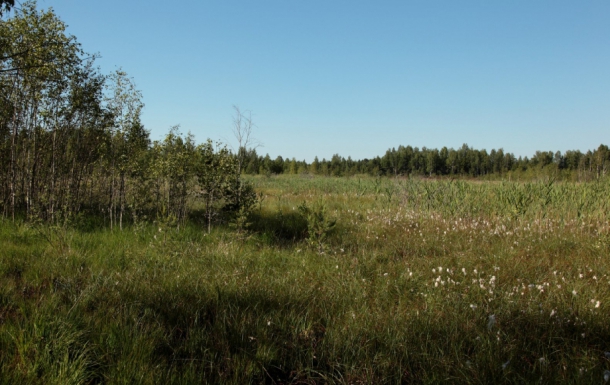
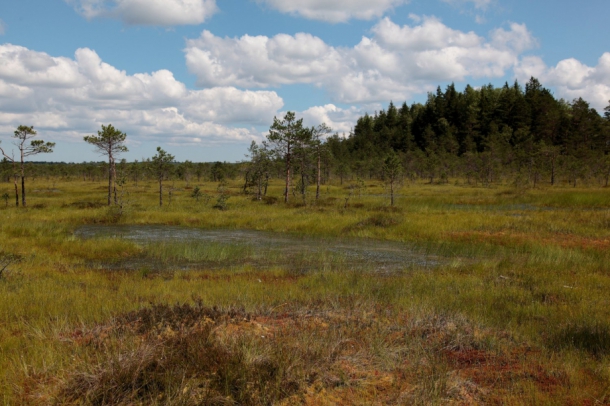
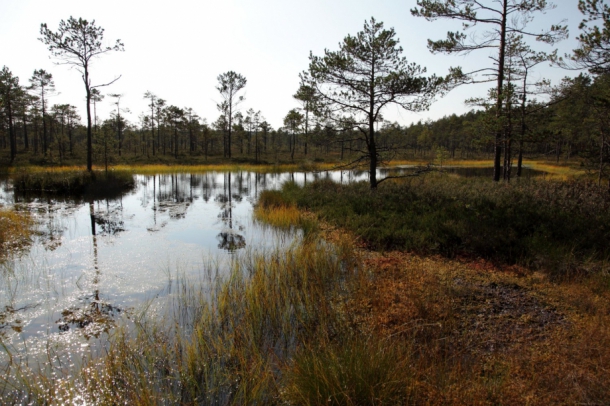
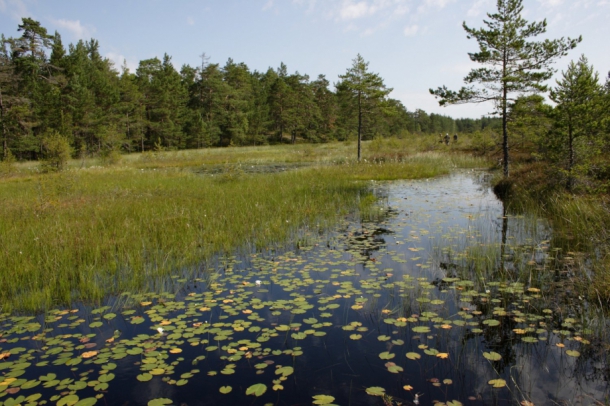

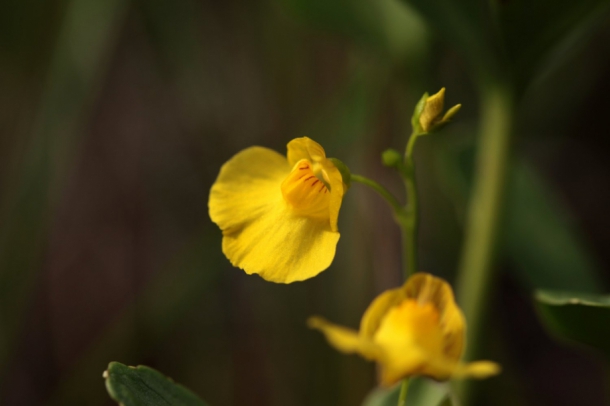
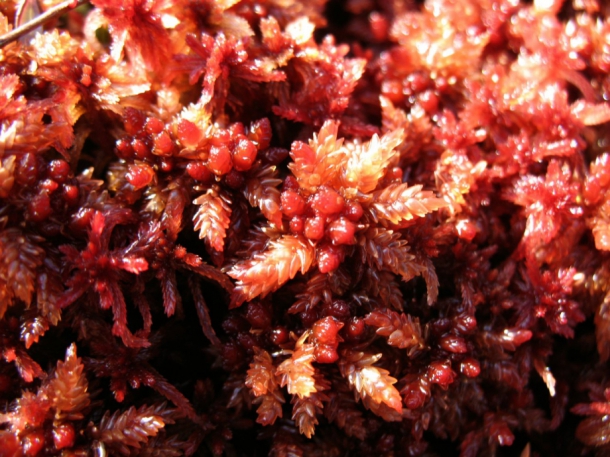
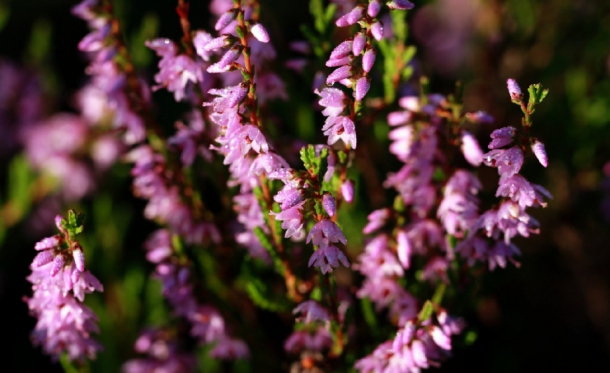
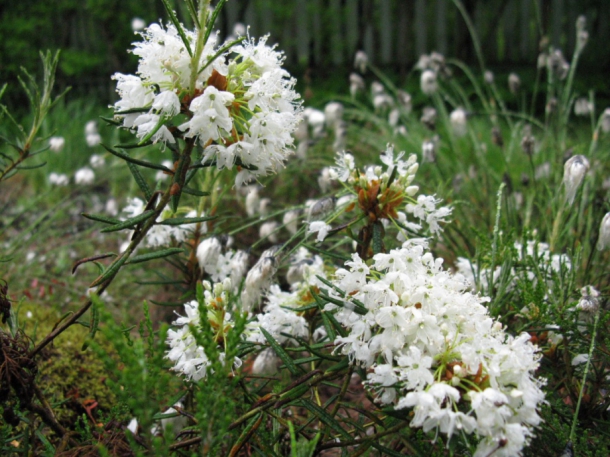
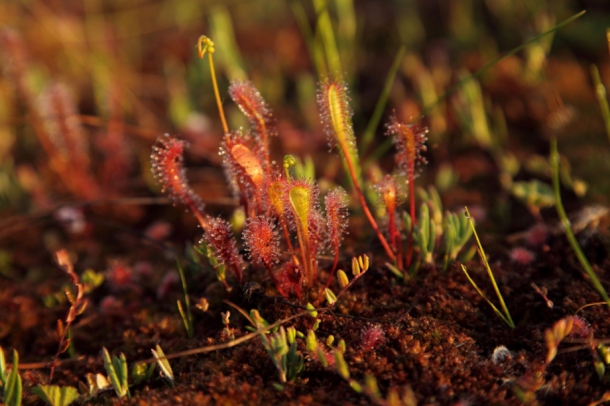
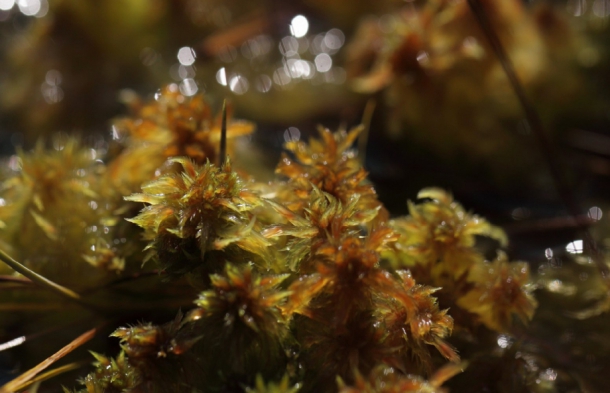
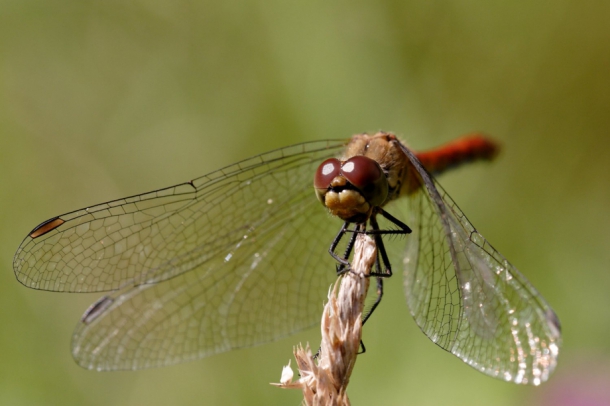
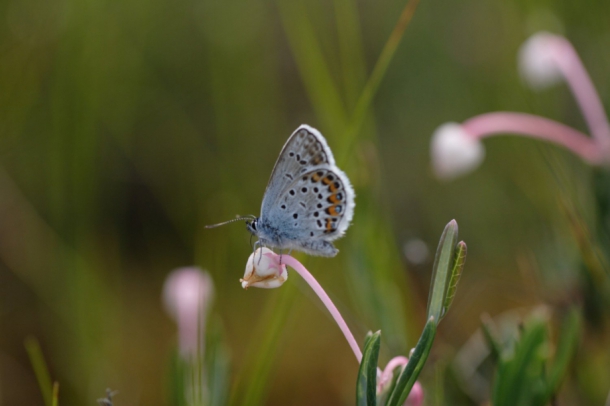
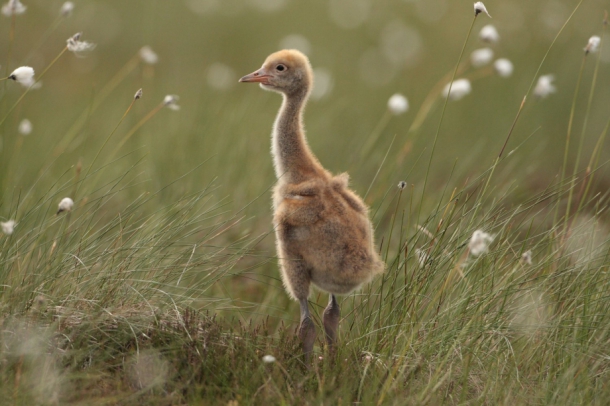
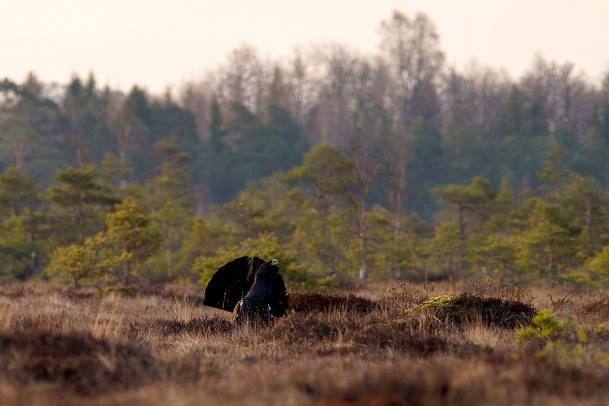
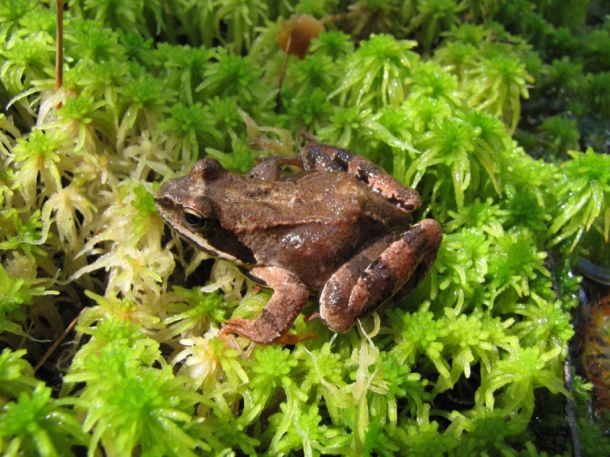
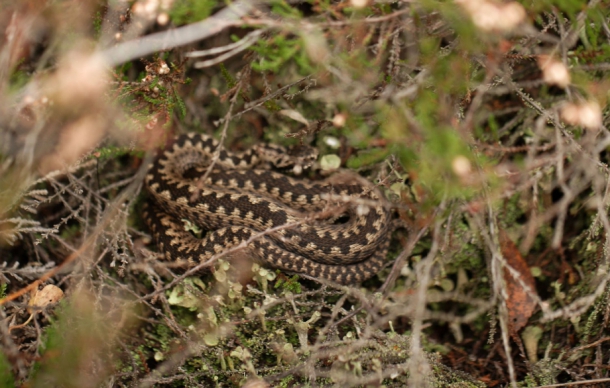
 Mire Conservation and Management in Latvia
Mire Conservation and Management in Latvia

